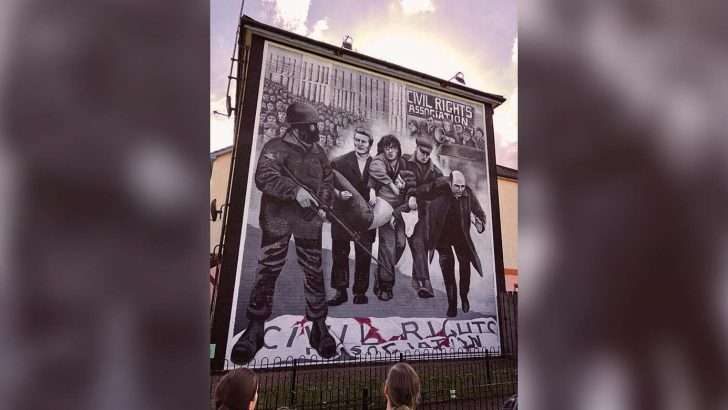Notebook
We are in a decade of centenaries marking one hundred years since our war of independence, the civil war and the establishment of the Irish State. These milestones and how we commemorate them provide opportunities for celebration but of course there are also many sensitivities to be aware of. The role religion and faith played in all of those events one hundred years ago is certainly one of the sensitivities to be aware of. What part does religion and faith play as we journey through these commemorations? I want to reflect on one recent commemoration which I found disquieting.
Planning
Five years of planning went into the centenary commemoration of the events of Bloody Sunday in Croke Park in November 1920. The result of that planning was a very impressive ceremony in the stadium on Saturday November 21, 2020. The moving ceremony featured beautiful traditional music and actor Brendan Gleeson gave an eloquent commentary on the 14 people who were killed in the massacre. When each name was mentioned a powerful torch was lit on Hill 16. The evening was interspersed with short interpretive video clips telling the stories of some of those who died that day. I was particularly struck by the video of young Michael Hogan from Tipperary showing him in a pub drinking a pint of Guinness on his way to play the game in Croke Park. The President and Taoiseach were there and all in all, it was a beautifully evocative commemoration. So what did I find disquieting? There was absolutely no element of prayer or faith. The question might be asked; why should there be any prayer or faith in such a celebration? A few considerations might help to answer that question. It is well documented that the person who reached Michael Hogan on the pitch could clearly hear the young Tipperary man praying as he lay dying. While it is debateable if Michael Hogan ever visited a pub to drink Guinness in the hours before he played a big game I would imagine that it is much more certain that he, and indeed the other thirteen who died, had all been to Mass that Sunday morning. And yet, one hundred years on, there was no space for a prayer as the events of that fateful day were being officially remembered by the Irish State. I also find it somewhat ironic that the entire event was hosted and coordinated by the GAA. The GAA is organised on a parish basis and to my best knowledge the Patron of the GAA is still the Catholic Archbishop of Cashel.
Concerns
When I contacted the authorities in Croke Park to raise my concerns, I got quite a detailed response and explanation why there had been no religious element to the commemoration. I was told that one of the fourteen families of those who were killed had specifically asked that there be no religious element to the event. This request seemed to be the determining factor in leaving out any element of prayer. I was also told that because the President and Taoiseach were present, any religious dimension would have to include all the main religions of the state. Again, I found this slightly baffling as I’m assuming that all those who died were actually Catholics.
While I can understand that the Catholic Church in Ireland has long since lost the privileged place it once occupied in every area of our society, does that mean that the dimensions of Catholic faith and prayer also have to be obliterated from the public square?
What’s seldom is wonderful!
A man is out on the sea in his rowing boat. In a storm he loses one of his oars and eventually the second one also goes. As a last resort he turns to God in prayer, pleading: “Dear Lord, You know I haven’t troubled you for years, and I promise, if you get me out of this mess, I won’t trouble you again for a long time more”.
Lord of life and love
Lord of life and love,
as we give thanks for times past,
grant us courage to embrace the present
and grace to share the future.
In memory of loved ones dear,
kindle their flame to shine in the dark
and light the path ahead.
Show the way that leads to life
as we cherish days gone by
and inspire us with the touch of love
that faith and hope live on.
– Annabel Shilson-Thomas



